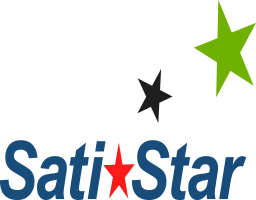GLP / GMP
Overview
Good Laboratory Practices and Good Manufacturing Practices require the documentation of processes, procedures and work instructions to ensure that these operating areas function in a reliable and robust manner.
Scope And Deliverables
Good Laboratory Practice generally refers to a system of management controls for laboratories and research organisations to ensure the consistency and reliability of results as outlined in ICH Guidelines.
It can mean one of two things:
- Either an accredited system of management controls for laboratories and research organisations to ensure:
- consistency of results
- efficient use of resources
- efficient knowledge transfer
- a well defined audit trail
or
- A “code of practice” for working safely and efficiently “at the bench”.
Good Manufacturing Practice is a set of regulations, codes, and guidelines for the manufacture of drugs (known as medicinal products in Europe), medical devices, diagnostic products, foods products and Active Pharmaceutical Ingredients (APIs). The term “current” Good Manufacturing Practices or “cGMPs” refers the way the pharmaceutical product regulations are called in U.S. in order to emphasize that the expectations are dynamic.
Since sampling products will statistically only ensure that the samples themselves (and perhaps the areas adjacent to where the samples were taken) are suitable for use, and end-point testing relies on sampling, GMP takes the holistic approach of regulating the production and laboratory testing environment itself.
An extremely important part of GMPs is documenting every aspect of the process, activities, and of operations. If the documentation is not correct and in order, showing how the product was made and tested, that allows for traceability, and recall from the market in the event of future problems, then the product is considered contaminated (in the US considered adulterated).
The World Health Organization (WHO) version of GMPs is used by pharmaceutical regulators and the pharmaceutical industry in over 100 countries worldwide, primarily in the developing world. In the European Union, the EU-GMPs, with more compliance requirements than those stated in the WHO GMPs are in force; while in the USA, FDA’s version of GMPs, including requirements over and above those stated in the WHO document, are enforced. Similar forms of GMP are used in other countries, with Australia, Canada, Japan, Singapore and others having highy developed/sophisticated GMP requirements.
Since the publication in 1999 by the International Conference on Harmonization (ICH) of “GMPs for Active Pharmaceutical Ingredients”, GMPs also apply in those countries and trade groupings that are signatories to ICH (the EU, Japan and the USA) and other countries who adopt ICH Guidelines (e.g. Australia, Canada, Singapore) to the manufacture and testing of active raw materials.
Other ‘Good Practice’ systems, along the same lines as GLP/GMP, exist. These include, “Good Clinical Practices” (GCP) for hospitals and clinicians conducting clinical studies on new drugs in humans; “Good Distribution Practices” (GDP) for wholesalers and distributors.
Collectively these ‘Good Practice’ requirements, and others not mentioned here, are referred to as ‘GxP’ requirements, and all follow similar philosophies.
What We Will Do
- Assess current practices in the relevant area for which GxP systems are being created.
- Design a document control system that suits the environment within your organization.
- Document processes, procedures, work instructions as needed.
- Provide a template for the creation of additional documentation as appropriate.
- Create a training system and provide guidance to ensure that all relevant employees are trained appropriately.
- Conduct an audit of the new system to ensure that it has been implemented effectively.
- Provide support to ensure that the new system is maintained adequately.
What We Need You To Do
- Provide us with access to all relevant areas.
- Ensure that all employees in those areas are aware of our role.
- Authorize those employees to provide us with required information in a timely manner.
- Review and approve submitted documents in a timely manner.
- Ensure availability of employees for training activities.
- Take appropriate managerial action on audit findings in a timely manner.
WHAT PEOPLE ARE SAYING
SatiStar's Experience Makes The Difference!
